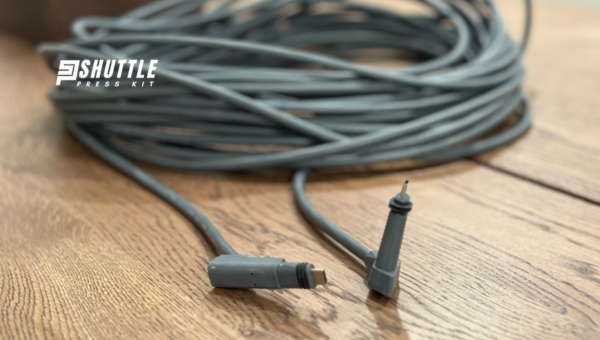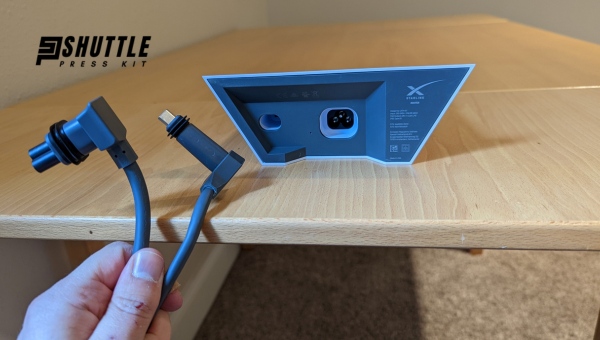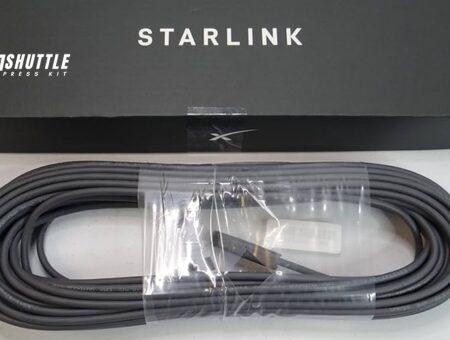When you first hear about Starlink Cable lengths, it’s normal to be curious. Many of us have stepped into the new age of internet services, with companies like Starlink leading the way. Now, I’m here to untangle your thoughts about one crucial bit: their cables! Have you ever set up internet at your place? Then you know cable length matters. But with Starlink, what are your options?
So let’s get straight to it: wondering how long a Starlink Cable can be? The standard cable that comes with the dish is about 100 feet (30 meters) long. This usually gives enough leash to place your satellite dish for clear views of the sky and good signal strength while keeping it connected to your home network.
Understanding Cable Lengths in Starlink
When talking about Starlink, we often get curious about the kinds of cables it uses. After all, these cables are vital for getting high-speed internet from space to our homes. Let’s get into the details.

Types of Cable Used by Starlink
Starlink uses a special cable to connect their dishes to our routers. This cable isn’t like the normal ones you might hook up to your TV or modem. It’s made just for Starlink’s setup, so it can handle the data zipping down from those satellites far above us.
Different models have different needs. Here’s what I found out:
- Gen 1 Circular: This is the first dish folks got their hands on. It has a straightforward setup with a standard-length cable.
- Gen 2 Standard Actuated – Residential, Roam form: A step up, this model gives a bit more flexibility with slightly longer cables for different positions around your house.
- Gen 2 High Performance – Business, Priority form: Aimed at business users who may need robust internet over larger areas – hence longer and tougher cables.
- Gen 2 Flat High Performance – Maritime, Mobility form: For ships and vehicles on the go, these cables are even more durable and can hang tight during travel.
- Gen 3 Standard – Residential, Roam form: The latest model pairs with new dish styles and cable lengths adjusted for improved coverage around homes.
Each model thinks about where you’ll use it – whether it’s on land or sea – and gives you just enough cable length without going overboard.
Also Read: Starlink Increases Prices for US Customers: Hidden Impacts!
Starlink Cable Length by Models
Starlink offers a variety of dish models suited for different user needs. Each model features its own proprietary connectors and comes with a predetermined cable length, ensuring a reliable connection and adequate reach from the installation point to your router or user terminal.
Gen 2 Standard (Residential, Roam):
- Comes standard with a 50-foot cable.
- There are additional options to buy either a 75-foot or the longest available, which is a 150-foot cable.
Gen 2 High Performance (Business, Priority):
- This kit includes an unchangeable cable that measures 82 feet in length.
- Cable connectors for this model are unique and not intended for use with other kits.
Gen 2 Flat High Performance (Maritime, Mobility):
- The basic package comes with an approximately shorter, more manageable length of around 26 feet.
- Alternatives offered include even shorter cables at about one and a half feet or longer ones stretching up to around the same as high-performance models at about 82 feet.
Gen 3 Standard (Residential, Roam):
- Outfitted with an almost similar base length as Gen2 Std., standing close to around 49 feet.
- Extended lengths can reach roughly thrice this base amount in measurement at approximately 148 feet.
Overcoming Connection Troubles
When it comes to keeping our internet running smoothly, we sometimes hit a bump. Rain pours down, storms hit, or maybe a cable stops working right.

We need to be ready for these things and find out how best we can keep connected even when trouble knocks on our door.
Is Your Cable Safe If Wet?
Is it okay if my Starlink cable gets wet? You bet! The way they make these cables means they’re built tough – ready for rain or even the odd splash here and there. So, if you’re worrying about a little water, you can rest easy knowing that your connection will stay steady.
Weatherproof – More Than Just A Buzzword?
When we hear “weatherproof,” do Starlink and Viasat really mean it? They have to show us that their setup can stand up to whatever the sky throws at us. That could mean heavy rain, harsh sun rays, or freezing snowstorms. I’m not just looking for promises; I want proof that their connections can fight off bad weather and win.
What Happens When A Connection Issue Arises That May Require A Cable Replacement?
Uh-oh! So what if something goes wrong with my cable? Both Starlink and Viasat have got their own ways of sorting this out. Maybe they send out a new one as quickly as possible or maybe they’ve got folks who come fix it up in person. Whatever happens, we shouldn’t fret too much: help is at hand when those unexpected little tech hiccups happen.
Also Read: How to Activate Starlink from Dish? Effortless Connection
FAQs
Can I use my own cables with Starlink equipment?
No, Starlink requires specific cables that come with their kits, as they are not compatible with standard coaxial cables.
Does bad weather affect Starlink or Viasat internet speed?
Yes, extreme weather conditions can impact the signal for both Starlink and Viasat, potentially reducing internet speeds.
Is it necessary to hire a professional for the installation of Viasat or Starlink?
While many customers can manage self-installation for both services, hiring a professional might be better for those unfamiliar with satellite equipment.
What’s the maximum length available for a Starlink cable?
The standard cable length provided by Starlink is about 100 feet (30 meters), which should meet most users’ needs.
If my internet provider’s cable gets damaged, will they replace it free of cost?
Policies vary by provider. Typically, if a cable is under warranty and damaged due to non-human factors, the provider may replace it at no extra charge.
Also Read: How to Activate Starlink from Dish? Effortless Connection
Conclusion
Choosing between Starlink and Viasat can really make your head spin. But let me tell you, it’s not so tough once you get down to the nitty-gritty. The cables they use, how long they are, whether you can bury them or not—all these details matter big time. You’ve got to check if their cables are going be okay getting wet and how sturdy they are against nasty weather.
If you’re wondering what happens when your cable gives up on you, well, both services have got your back with replacements. End of the day, it’s all about what fits best with your needs and budget—whether that’s Starlink’s space tech or Viasat’s tried-and-true ways.
